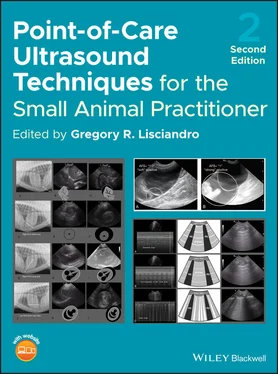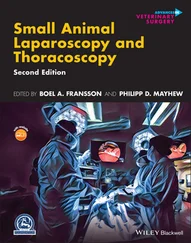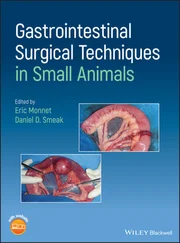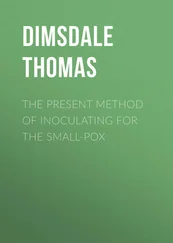The following are acknowledged for their illustrative contributions: Suji Park, Englewood Cliffs, New Jersey ( www.sujisuji.com); Dr Judy Brown, DVM, Dipl. ACVECC, Toronto, Canada; Hannah M. Cole, Adkins, Texas; Nancy Place, MS, Association of Medical Illustrators, San Antonio, Texas; Alice MacGregor Harvey, Medical Illustrator, North Carolina State University; and Randi Taggart, Richmond, Virginia.
Dr Karin Vomend, MVZ, Cuernavaca, Mexico, for editorial help and Dr William A. Seleen Jr, Bemus Point, New York, who read the entire manuscript and provided editing and content suggestions that helped improve the manuscript.
The entire Wiley team, including Erica Judisch, Commissioning Editor, and Jayadivya Saiprasad, Project Editor, and her staff, Holly Regan‐Jones, freelance editor, for their expertise, patience, and encouragement throughout the construction and editing of the second edition, which became far bigger than originally foreseen.
The chapter authors from the United States and internationally, who not only believe in the potential for point‐of‐care and FAST ultrasound to make a positive impact in veterinary medicine but also generously gave their time and expertise in making this second edition possible.
Lastly, Drs Kelly Mann, DVM, DACVR, and Geoff Fosgate, DVM, PhD, DACVPM, University of Pretoria, who have helped me generously since my residency training with publishing clinical research; Dr Søren Boysen for his help, support, and friendship throughout the years; and my wife, Dr Stephanie C. Lisciandro, DVM, Dipl. ACVIM, who with her support, sacrifice, and dedication over the past decade has made it possible for me to invest the tremendous amount of time and effort needed to accomplish this task. I am forever grateful.
About the Companion Website
Don’t forget to visit the companion website for this book: www.wiley.com/go/lisciandro/ultrasound2 
There you will find valuable material designed to enhance your learning, including:
Video clips

Scan this QR code to visit the companion website.
Section I Basics of Ultrasound and Imaging
Chapter One POCUS: Introduction
Gregory R. Lisciandro
Veterinary POCUS (V‐POCUS) Defined
POCUS is point‐of‐care ultrasound.
FAST is focused assessment with sonography for trauma, triage, and tracking (Lisciandro 2011).
Veterinary POCUS (V‐POCUS), which includes FAST examinations, is defined as a goal‐directed ultrasound examination(s) performed by a healthcare provider at point of care (cageside) to answer a specific diagnostic question(s) or guide performance of an invasive procedure(s).
We will use the acronyms POCUS and FAST throughout the textbook. It is important to read the Preface prior to Chapter One.
Briefly, we will mention some of the more important changes and developments since our first edition. A more complete list of terminology and abbreviations is found in the Appendices. For a grasp of some of the basic concepts within this textbook, let’s define a few things.
The “T 3” of Trauma, Triage, and Tracking
We have mostly dropped the “T 3”designation that previously emphasized the “3‐T approach” of applying FAST for T rauma, T riage, and T racking (T 3), primarily because since the first edition, the T 3approach has become routine throughout North America, South America, Europe, and the Middle East in the author’s experience.
COAST 3 is Out, POCUS is In
COAST 3or “cageside organ assessment with sonography for trauma (triage and tracking)” is out (similar to BOAST in human medicine) and POCUS is now the preferred mainstream term similar to what has occurred in human medicine (Rozycki et al. 2005; Lisciandro et al. 2014).
We have replaced COAST with POCUS in this second edition and advocate for POCUS (or Focused) X, or POCUS (Focused) Y, or POCUS (Focused) Z as giving better clarity to the examination and have proposed approaches to the various systems throughout this edition. The use of FoCUSED for “Focused Cardiac Ultrasound” and other confusing acronyms we hope to avoid in veterinary medicine. FoCUSED in human medicine would have been better named POCUS (or Focused Heart) Heart or POCUS (or Focused Echo) Echo. The term “Focused” as in our first edition similarly provides clarity to the examination and may be used interchangeably with specific POCUS examinations.
FAST Survives and Continues
FAST stands for Focused Assessment with Sonography for Trauma and has been applied to the abdomen (FAST) and extended thorax (EFAST) in people (Rozycki 1998; Rozycki et al. 2001; Kirkpatrick et al. 2004). Its applications have expanded to nontrauma and tracking (Lisciandro 2011, 2016; McMurray et al. 2016). Problems arise in the human literature with terminology and they are not always right. For example, what exactly is EFAST? Is it a FAST and the thorax or only the thorax? What if we just do the thorax, then what FAST do we call it? Abdominal FAST (AFAST) and thoracic FAST (TFAST) give exact clarity and have been standardized and validated in published studies (Lisciandro et al. 2008, 2009; Lisciandro 2016; McMurray et al. 2016). Their acoustic windows have exact clarity , as does the “FAST” lung examination called Vet BLUE (Lisciandro et al. 2014, 2017).
The Flash Exam is Not a FAST Exam
The “Flash Exam” term is applied for a general whole‐cavity acoustic window approach to rapidly answer a simple binary question: is free fluid present or not in the abdominal and thoracic cavity? And now, with lung ultrasound becoming accepted among colleagues, are B‐lines present or not? There is so much more to gain by using standardized acoustic windows of AFAST and TFAST (and Vet BLUE) that take about the same amount of time as the “Flash” approach. The “Flash” usually is followed by “looking around,” often leading to a “satisfaction of search error” approach. Again, in the same amount of time, you could have done AFAST, TFAST, and Vet BLUE (Global FAST) with standardized acoustic windows following a protocol and gained so much more unbiased baseline patient information, while avoiding “satisfaction of search error.” AFAST, TFAST, and Vet BLUE are not “Flash” exams and the terms should not be used interchangeably. We should stop teaching the “Flash” approach, just as we would not teach limited physical examinations – such as only quickly palpating the abdomen of a vomiting cat to draw clinical conclusions without looking further ( Figure 1.1).
Radiologist and Cardiologist Studies
We will refer to these studies as complete detailed abdominal ultrasound” and “complete detailed echocardiography.” “Diagnostic” is a term that can be more universally applied as both a POCUS (or Focused) and FAST examination are potentially diagnostic, for example for ascites, pleural and pericardial effusion, calcaneus tendon rupture, skull fracture, a splenic mass, gallbladder mucocele, to name a few.

Figure 1.1. The premise of FAST ultrasound – anechoic triangulations are abnormal and represent free cavitary fluid. The nonradiologist can be readily trained to recognize anechoic (black) triangulations within cavities and spaces, which are abnormal in adult patients. The “Flash” exam answers a simple binary question of whether fluid is present or absent, whereas the AFAST provides more information through fluid scoring and its target organ approach, TFAST through echo views and volume status, and Vet BLUE through a regional, pattern‐based approach. Courtesy of Dr Gregory Lisciandro, Hill Country Veterinary Specialists and FASTVet.com, Spicewood, TX.
Читать дальше















